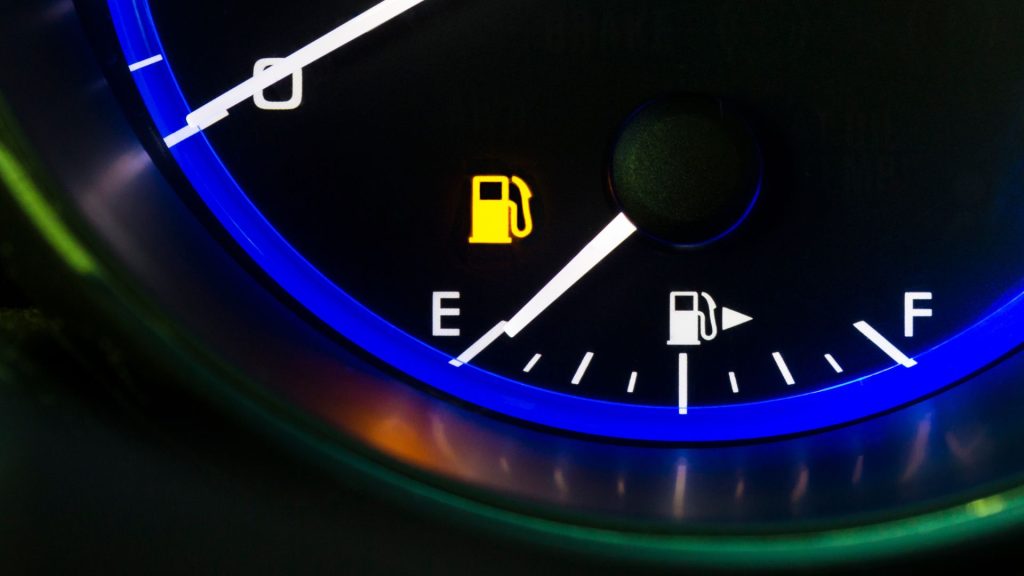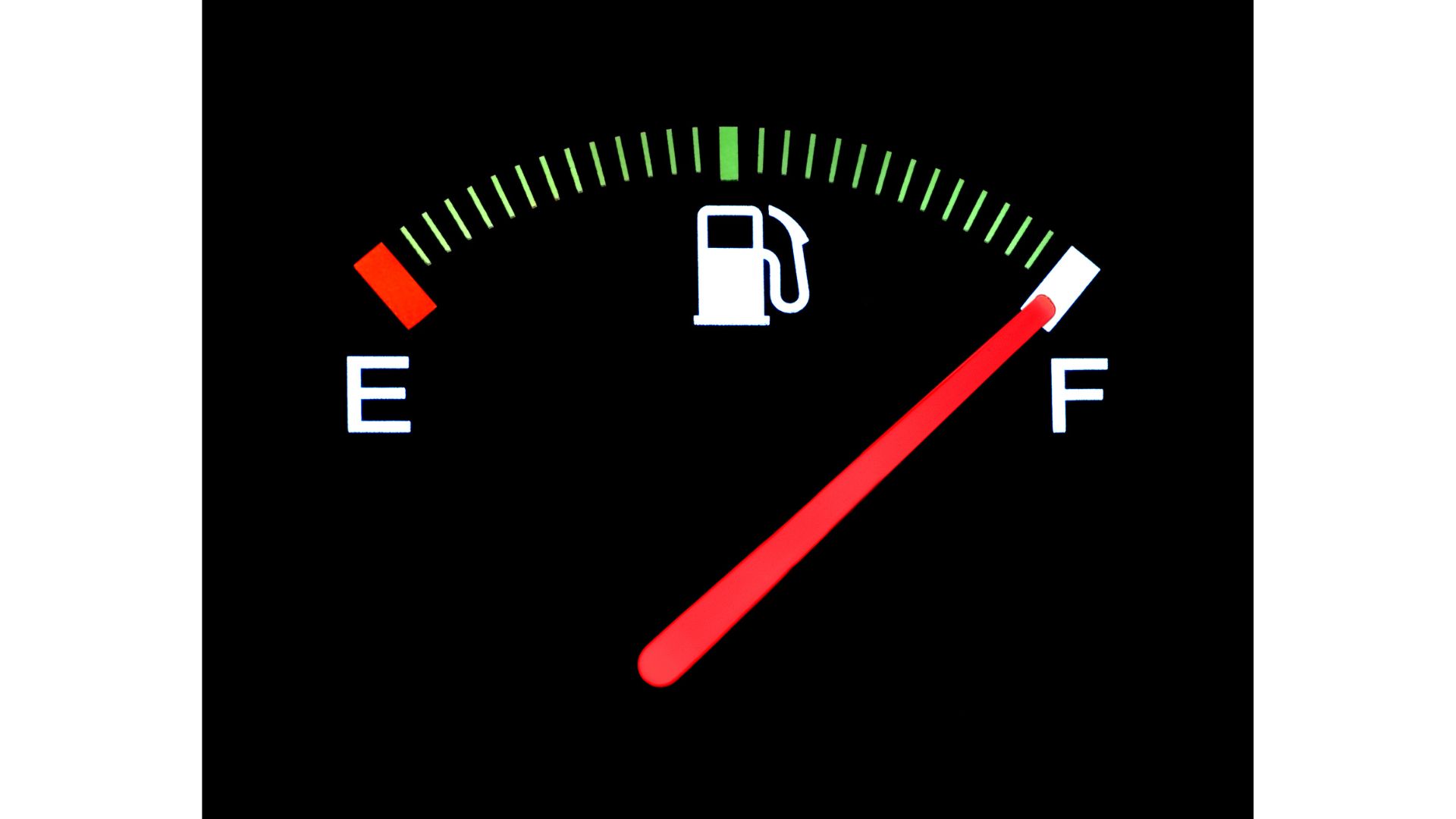The gas gauge is useless to you unless you can trust it to provide accurate readings. Why Does My Gas Gauge Go Up And Down?
The gas gauge goes up and down because of the issue with a defective fuel sensor and float arm, loose & damaged wiring.
To make sense of this problem, you must first understand the workings of a fuel gauge. Consider the following:
Do you have a toilet in your home? The toilet has a floater that prevents the tank from overflowing when it refills. The floater will rise as the water fills. Once it reaches a certain level, the floater will shut the water off.
Protect-My-Car compares the fuel gauge system to the toilet system. The vehicle has a composite foam floater connected to a thin metal arm and a variable resistor. The floater will rise or fall depending on the amount of gas in the tank.
On its own, this isn’t enough to help you. However, the floater works with a sensor to generate an accurate reading on the gauge.
This entire system is a fuel-sending unit that operates independently or as part of the fuel pump assembly. A variable resistor is the most critical component in this setup because it has a contact it slides to adjust the resistance voltage.
This variable resistor uses a wire to send readings to the fuel gauge. Understanding the workings of a fuel-sending system allows you to identify the factors that interfere with its operations.
The floater works in tandem with a metal rod to measure the amount of gas in the tank. There is a situation where the metal arm starts moving a little too freely because it is worn out. This causes the floater to bounce erratically, forcing the gauge to go up and down unpredictably.
The floater can separate from the arm in some cases. Once that happens, the gauge will show an empty tank at all times, even when you add more gas.
The gas can slosh about haphazardly in the tank as you drive, especially when you traverse uneven roads. That sloshing causes the floater and its arm to move up and down, producing the erratic readings you keep seeing on the gauge. This is more likely to occur in older models. Many modern vehicles have mechanisms that prevent sloshing of this nature.
Sometimes, the gas gauge develops a fault. If the gauge is part of an instrument cluster, troubleshoot the system because a faulty instrument cluster system can produce erratic readings in the gas gauge.
Can I Drive With My Gas Gauge Going Back And Forth?
Yes, you can drive with an erratic gas gauge. The gas gauge doesn’t participate in your vehicle’s operations in any way. It simply shows you the amount of gas left in the tank. You could remove the fuel-sending unit and gas gauge, and the vehicle would still run.
However, you have one significant concern. You cannot trust a faulty gas gauge to track the volume of gas left in the tank. This is a problem because you risk running out of fuel at an inconvenient moment. For instance, what if the tank runs empty on an isolated road in the middle of the night?
You won’t know that your gas is almost depleted because the gauge’s readings are not accurate. If this happens continuously, you may harm the vehicle because the fuel plays a significant role in the car’s lubrication and cooling processes.
Therefore, you may damage the fuel pump by allowing the car to run out of fuel over and over again. Additional concerns include clogging in the fuel lines and injectors. If you don’t have the money to fix an erratic fuel gauge, check your manual.
It will tell you how many miles you must drive before the fuel tank runs dry. Use that information to identify the right time to refill the tank. But you cannot always trust these estimates, especially in older vehicles whose efficiency has deteriorated significantly.
How Do You Fix A Fluctuating Gas Gauge?

The gas gauge breaks more frequently than you think. Fortunately, the solutions are relatively straightforward:
1). Start by checking the sending unit. The manual will show you how to find the sending unit and the best way to access it:
- Check the wires on this unit for damage. If they have breaks and tears, replace them. If the connections are loose, make them tight.
- Use a multimeter to check the voltage of the connector. The readings should match the information in the manual. Make sure the ignition is in the ‘On’ position before you perform this test.
- Use the multimeter to test the rest of the circuit if the readings from the wires and connectors are wrong.
- Check the voltage drop. Make sure the sending unit is creating the appropriate resistance.
- Your final stop is the ohms range. Use the ohms setting and determine whether or not the ohms range you’ve recorded matches the information in the manual.
- Replace a faulty sending unit.
2). Some sending units are salvageable. For instance, you can fix corrosion by scrubbing the affected areas on the metal arm. Don’t stop at the arm. Use a fuel system cleaner to scrub every surface you can see. If the gauge continues to misbehave, get a new arm.
3). Look for loose or damaged wiring causing a shorted signal. Replace it.
4). Inspect the fuse. If it blows, get a new one.
5). Change the vehicle’s angle. Some gauges will go up and down because you keep driving at strange angels. As such, the gas keeps changing the readings dramatically by sloshing. Try driving on a flat and even surface. If the gauge stabilizes, you can stop worrying. Your sending unit is fine. The odd angles were the problem.
6). Replace the fuel pump and filter.
7). Get a new fuel gauge. If the entire instrument cluster system has malfunctioned, replace it.
8). If sloshing gas is the problem, Autometer has a solution many laypeople never consider. Add some internal baffling, and a foam insert to prevent the gas from moving too dramatically. You should also search for anti-slosh devices on the market.
Your model’s manufacturer may offer special devices that prevent unnecessary sloshing when the car travels over an uneven road.
How Much Does It Cost To Fix A Fluctuating Fuel Gauge?
It depends on what you’re trying to do. Some solutions are more expensive than others:
- Are you trying to replace the sending unit? Some units are $200 or less. But you may spend as much as $800 depending on the model.
- Don’t waste money on a new sending unit unless you’ve eliminated all other potential culprits. For instance, you can tighten loose connections or replace damaged wires yourself.
- If you take the vehicle to an expert, don’t be surprised if you pay $300 in labor costs. That doesn’t even include the price of a new sending unit.
- You can replace the defective parts for free if you have a warranty.

